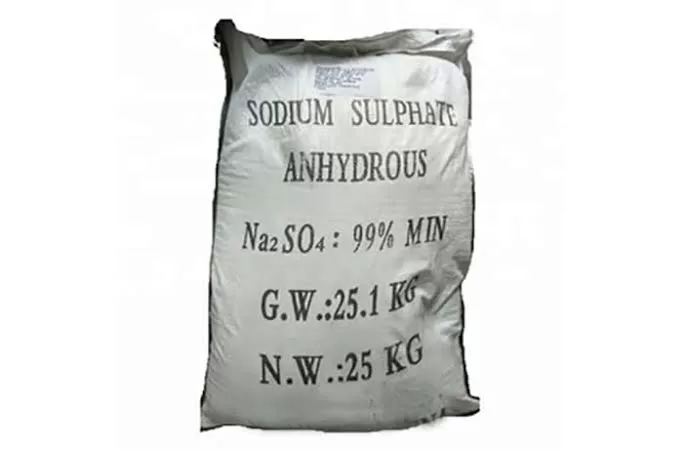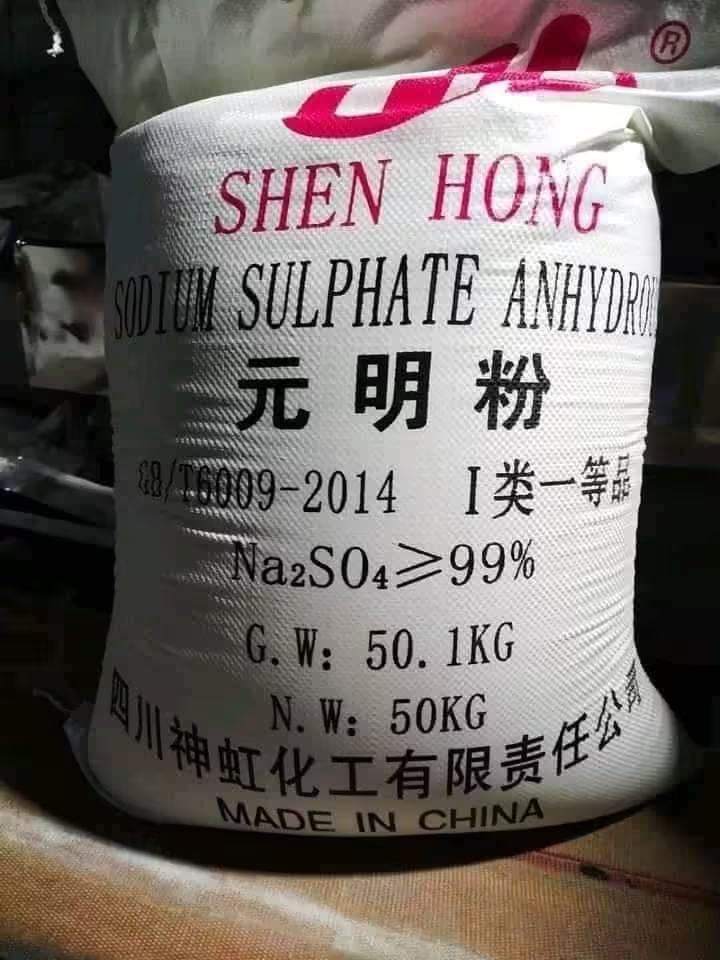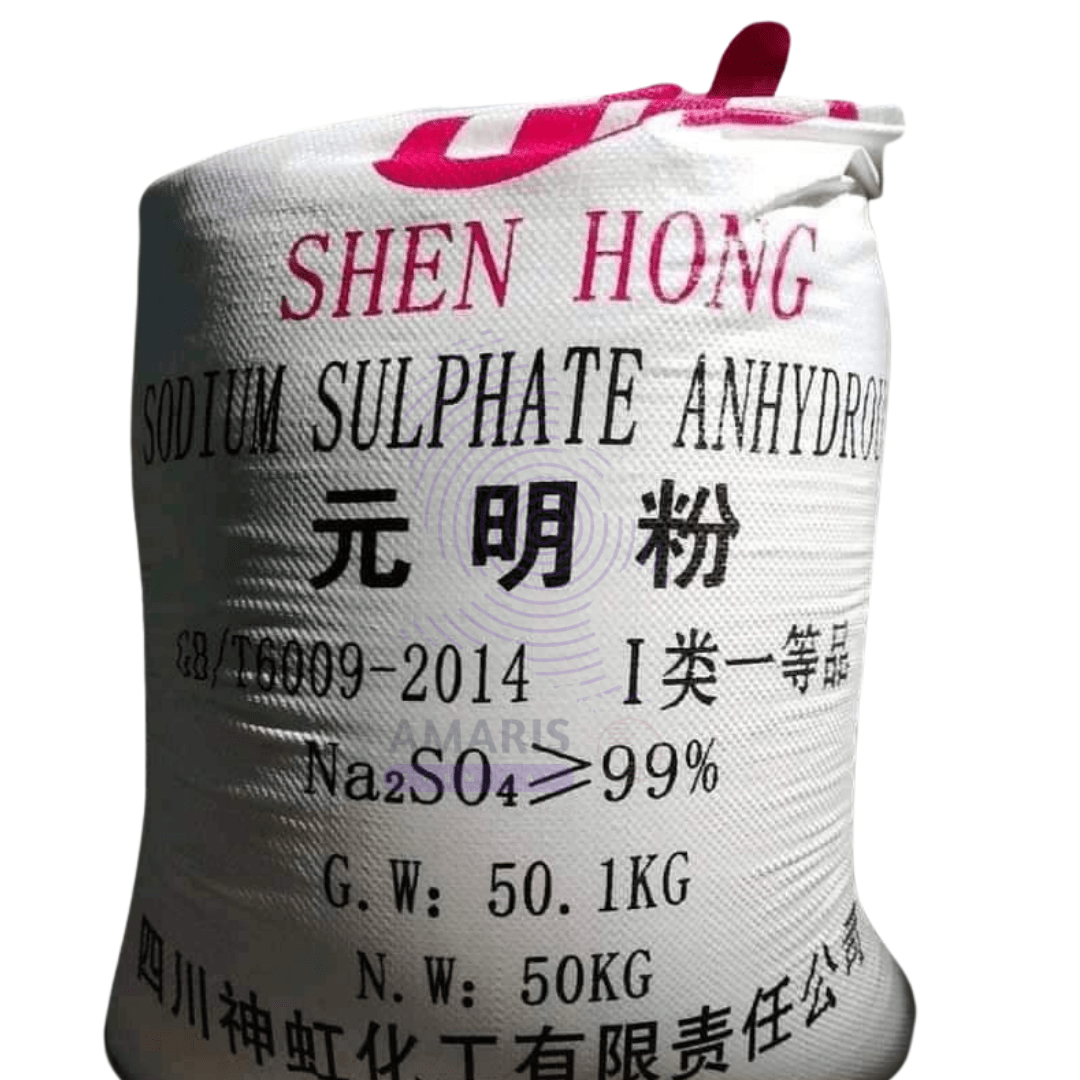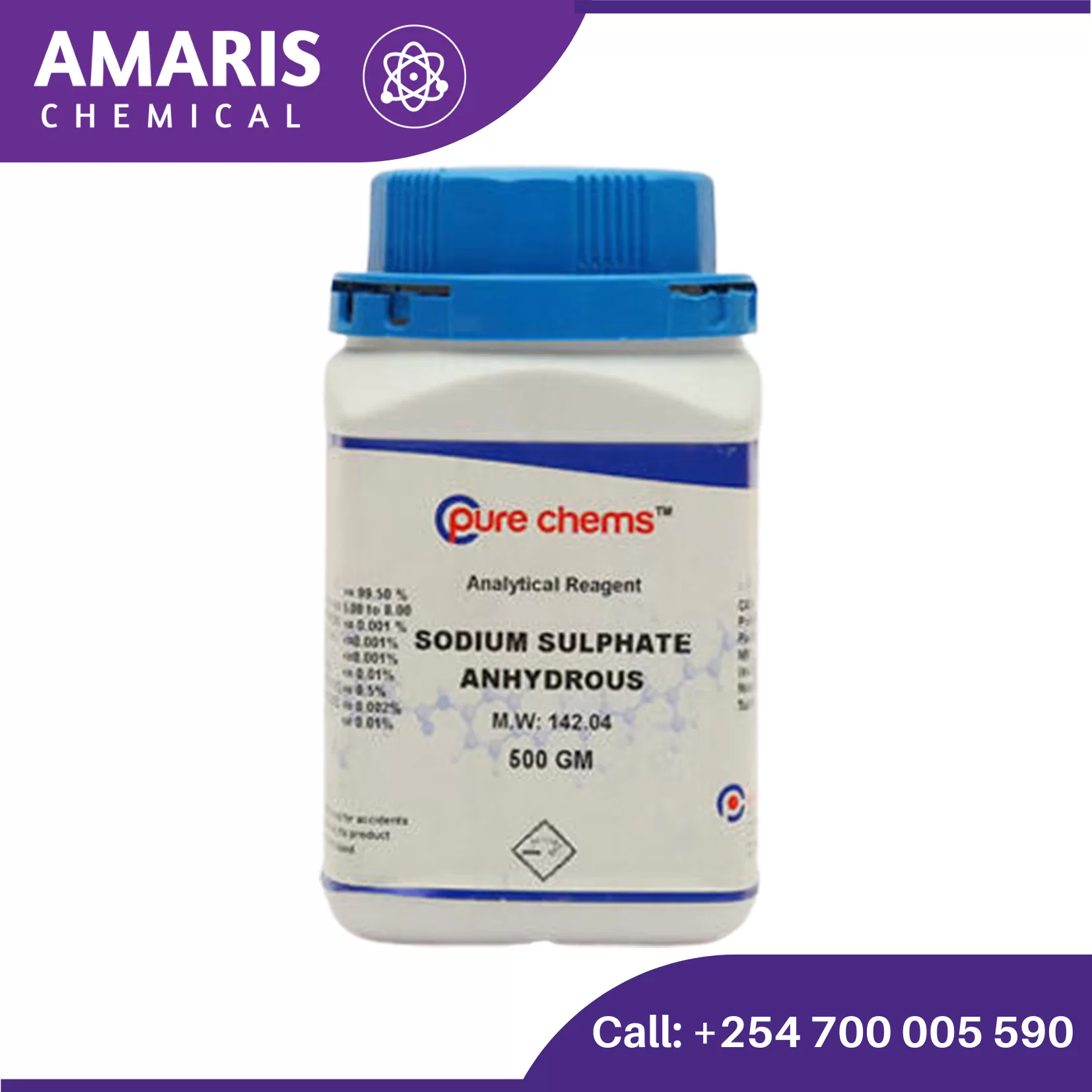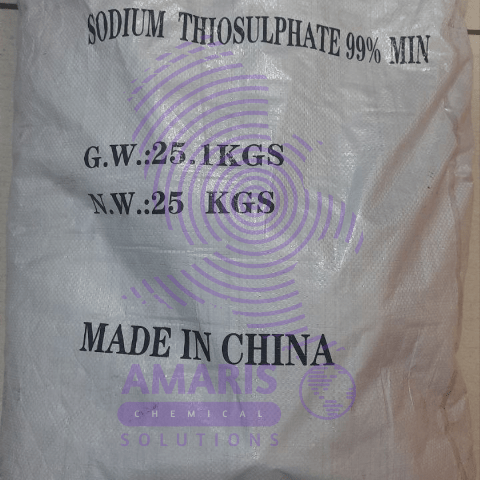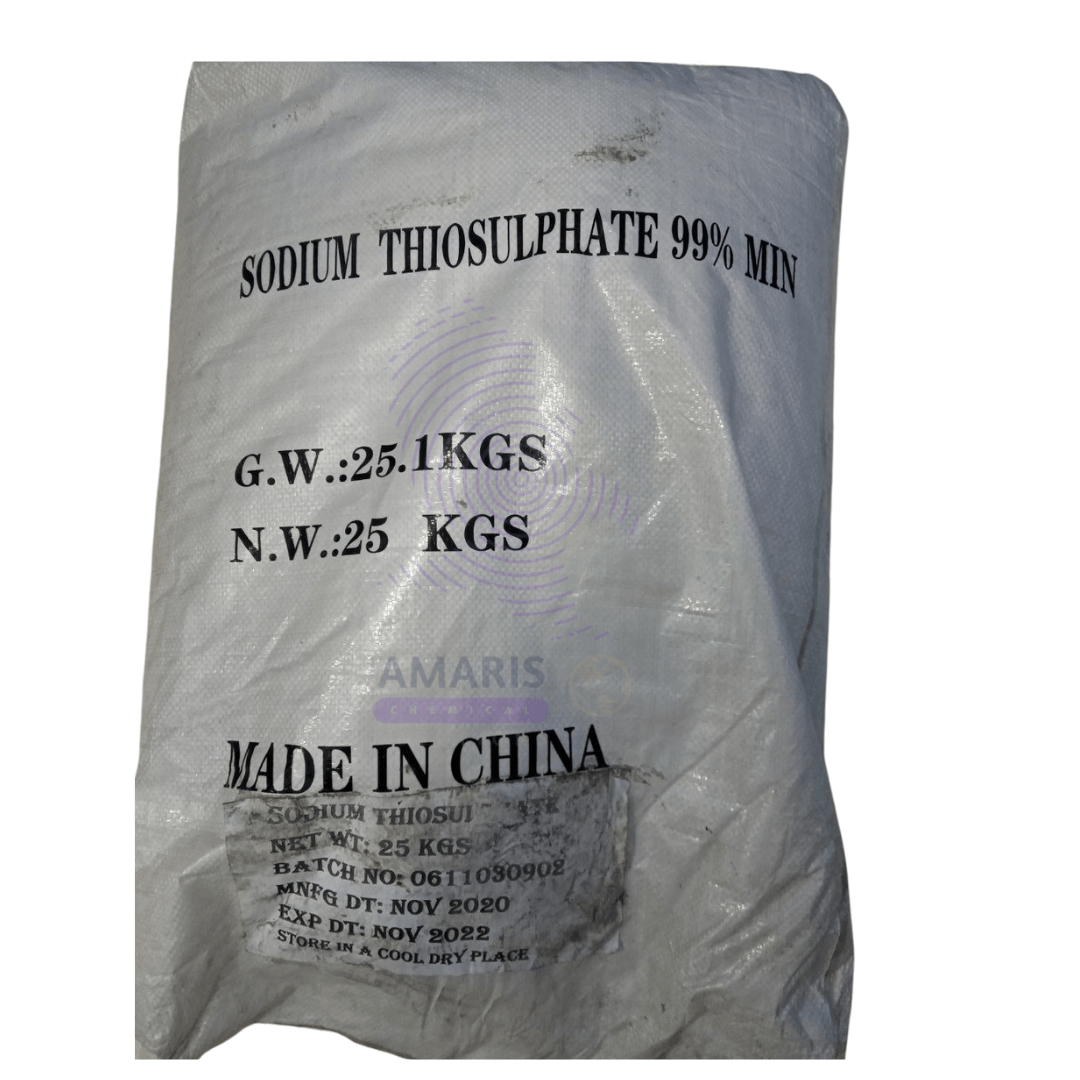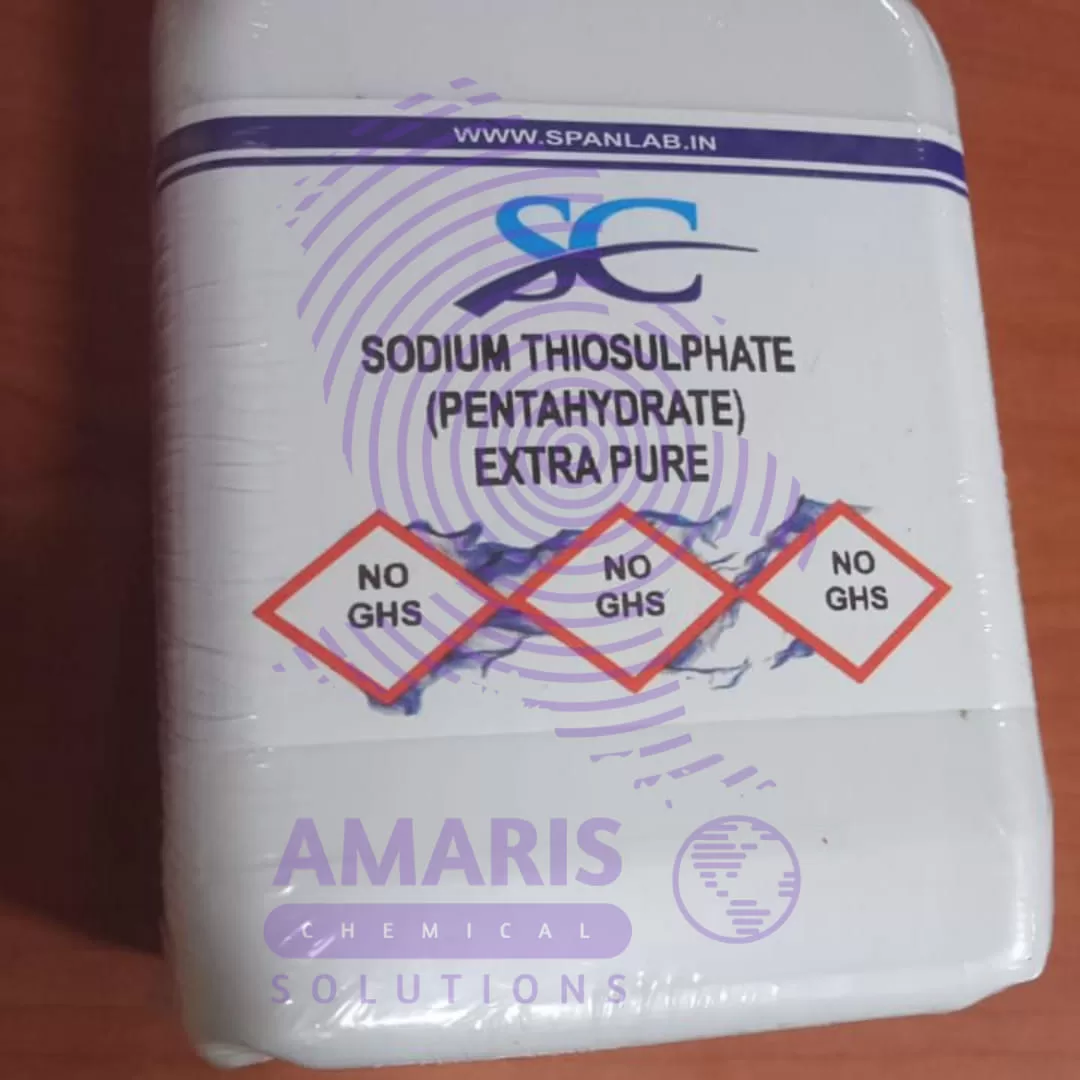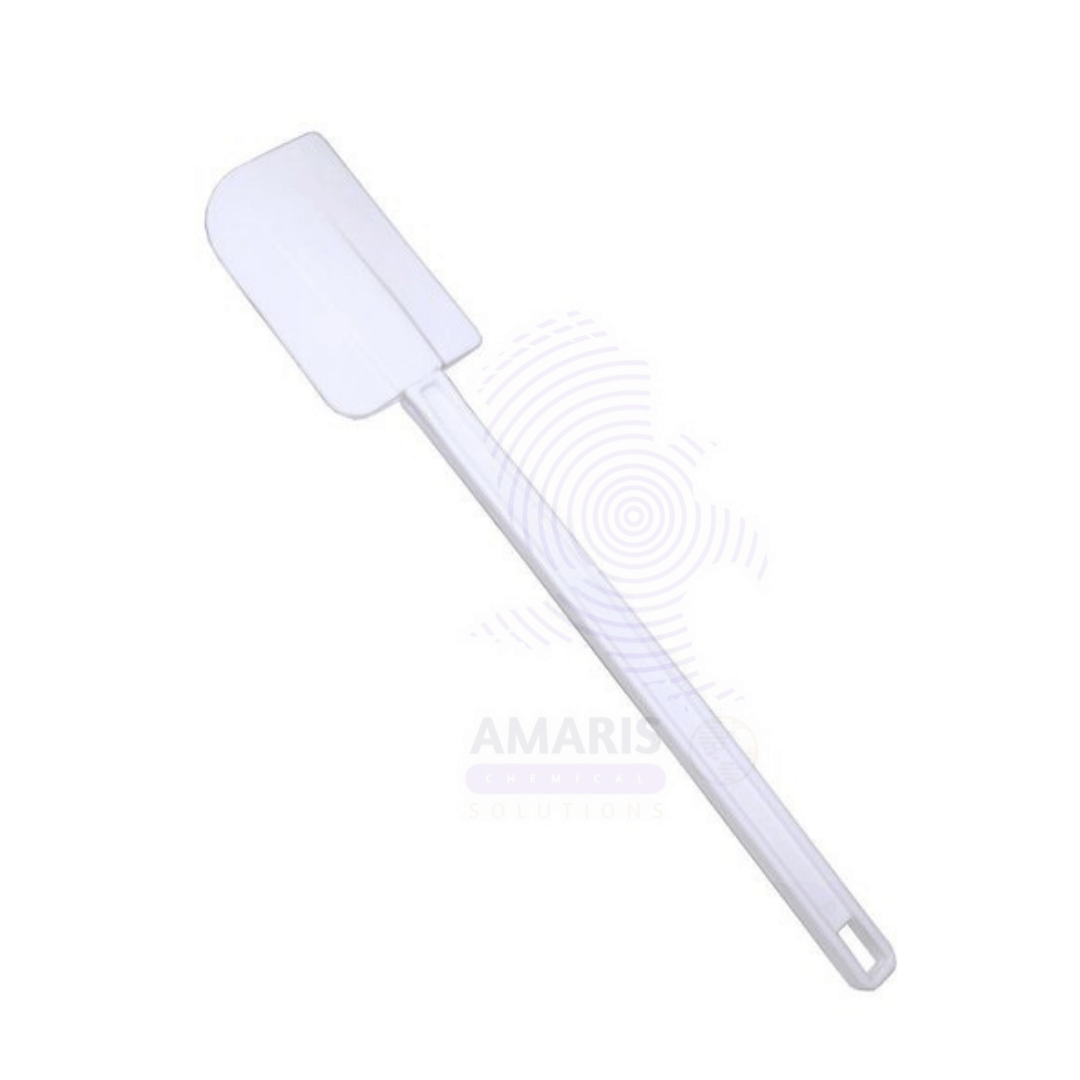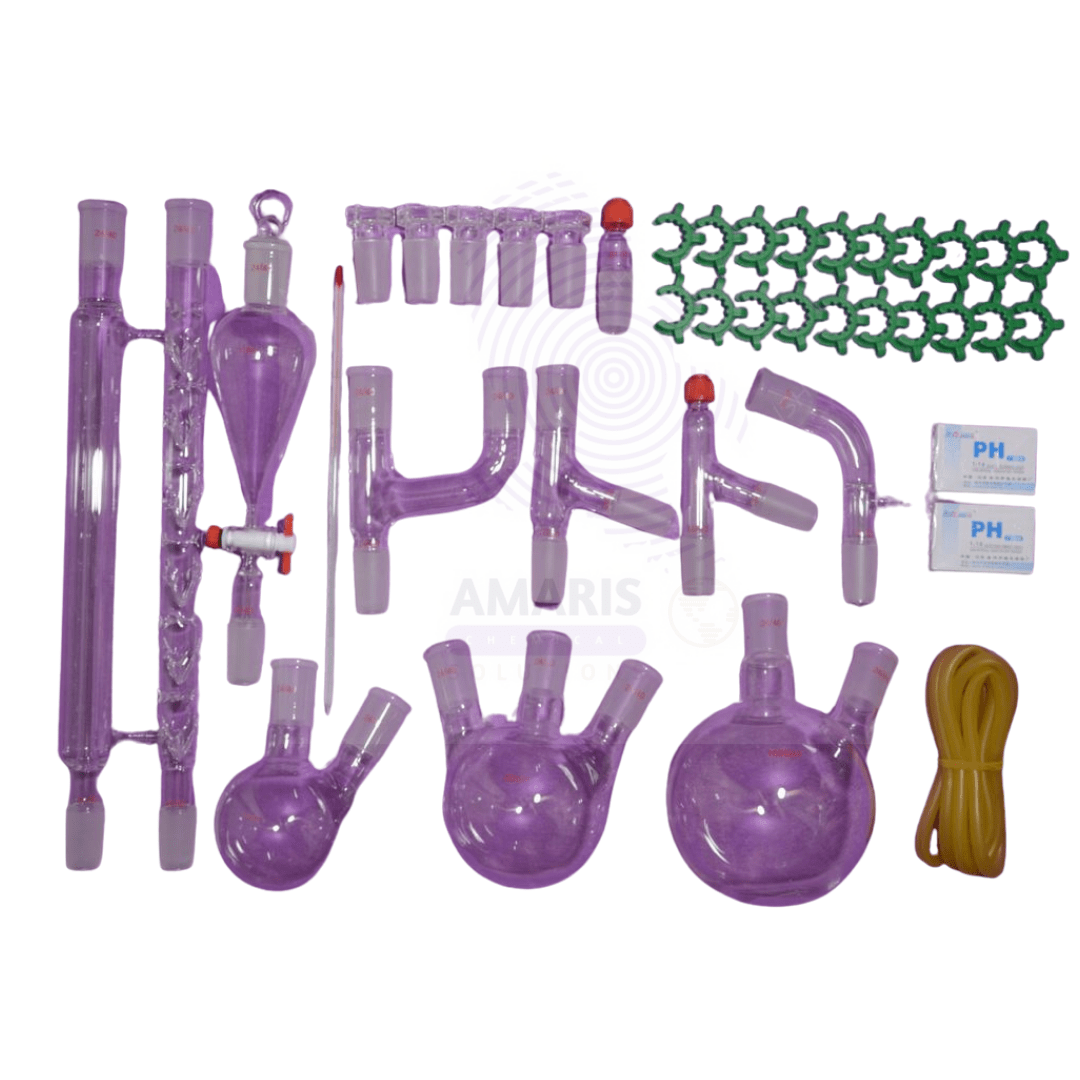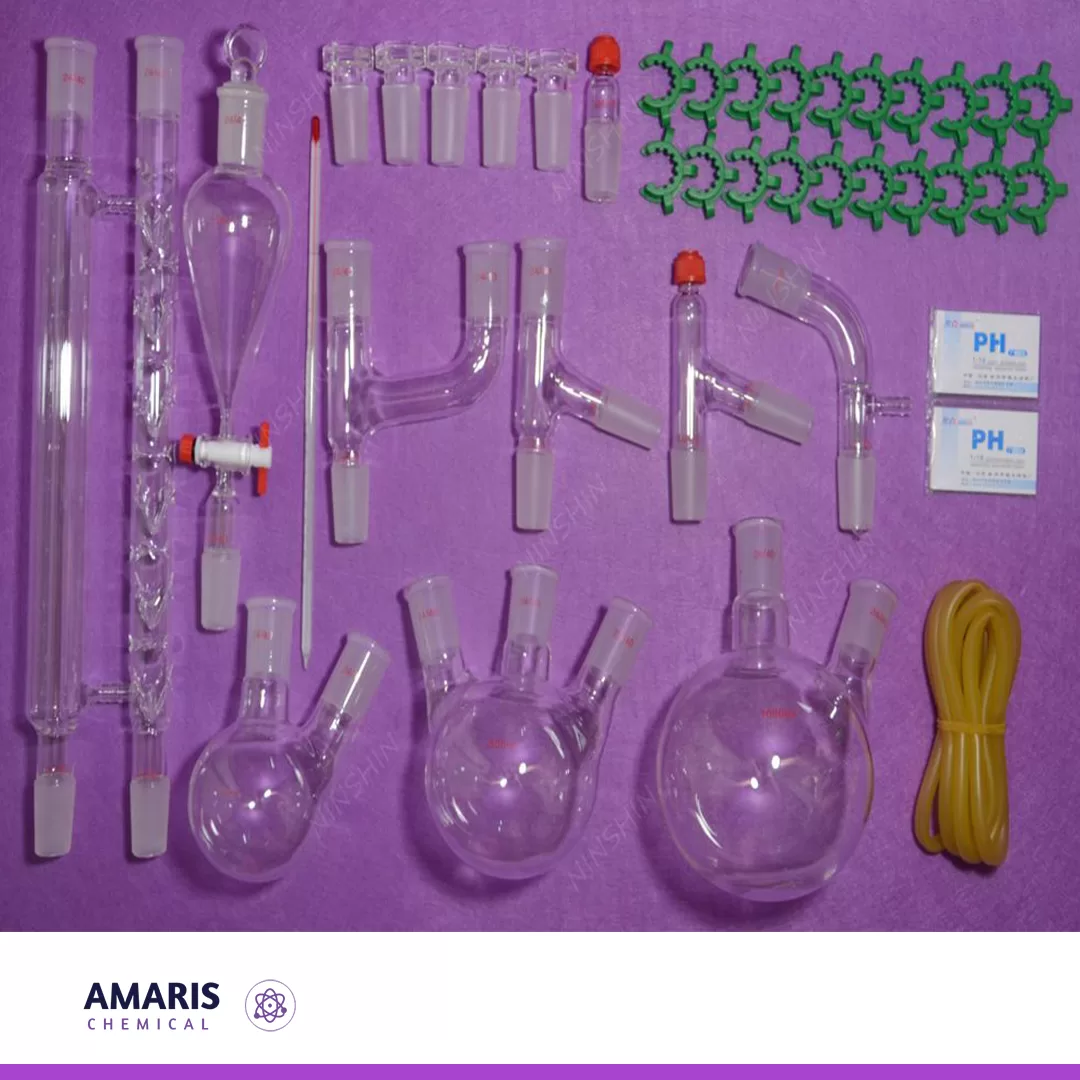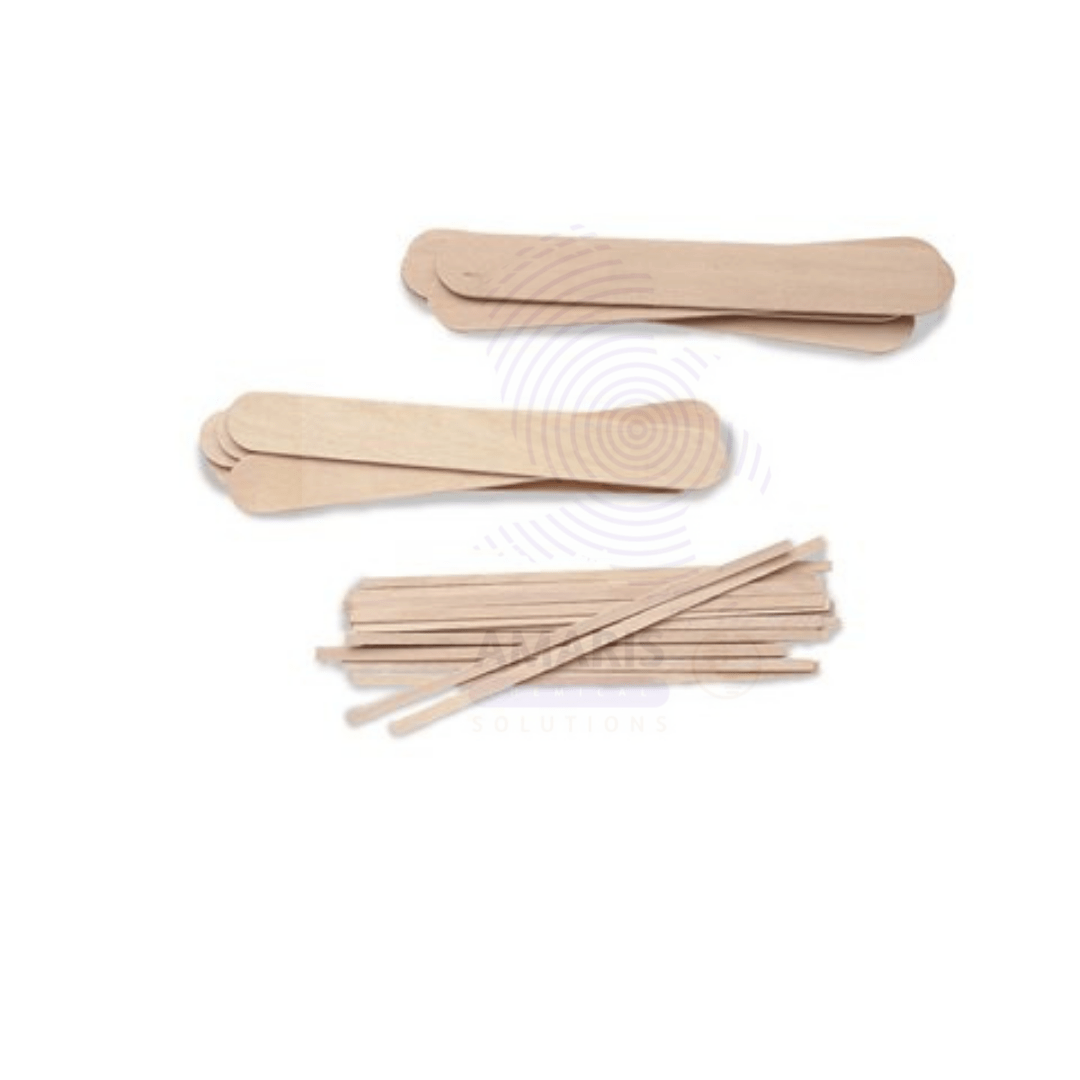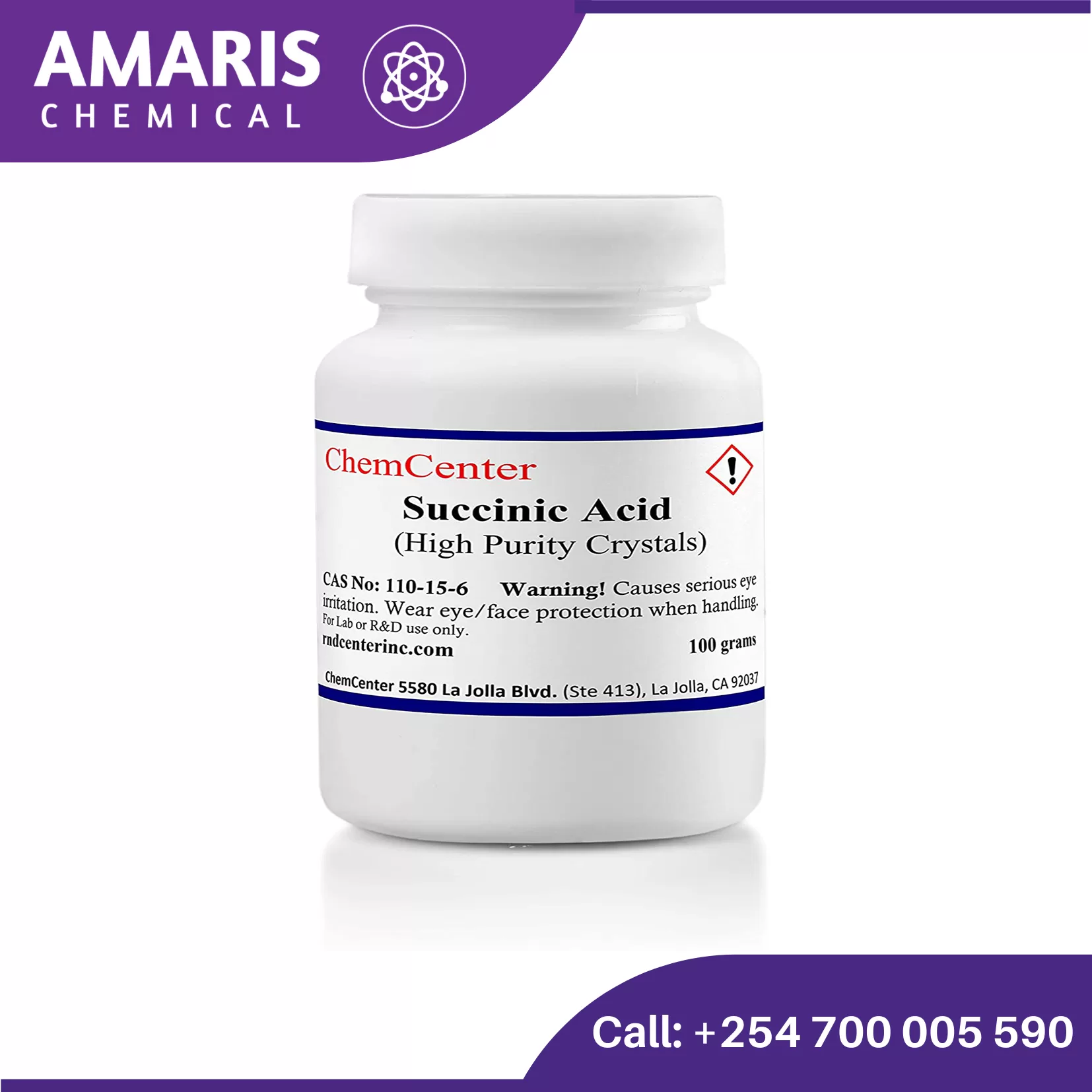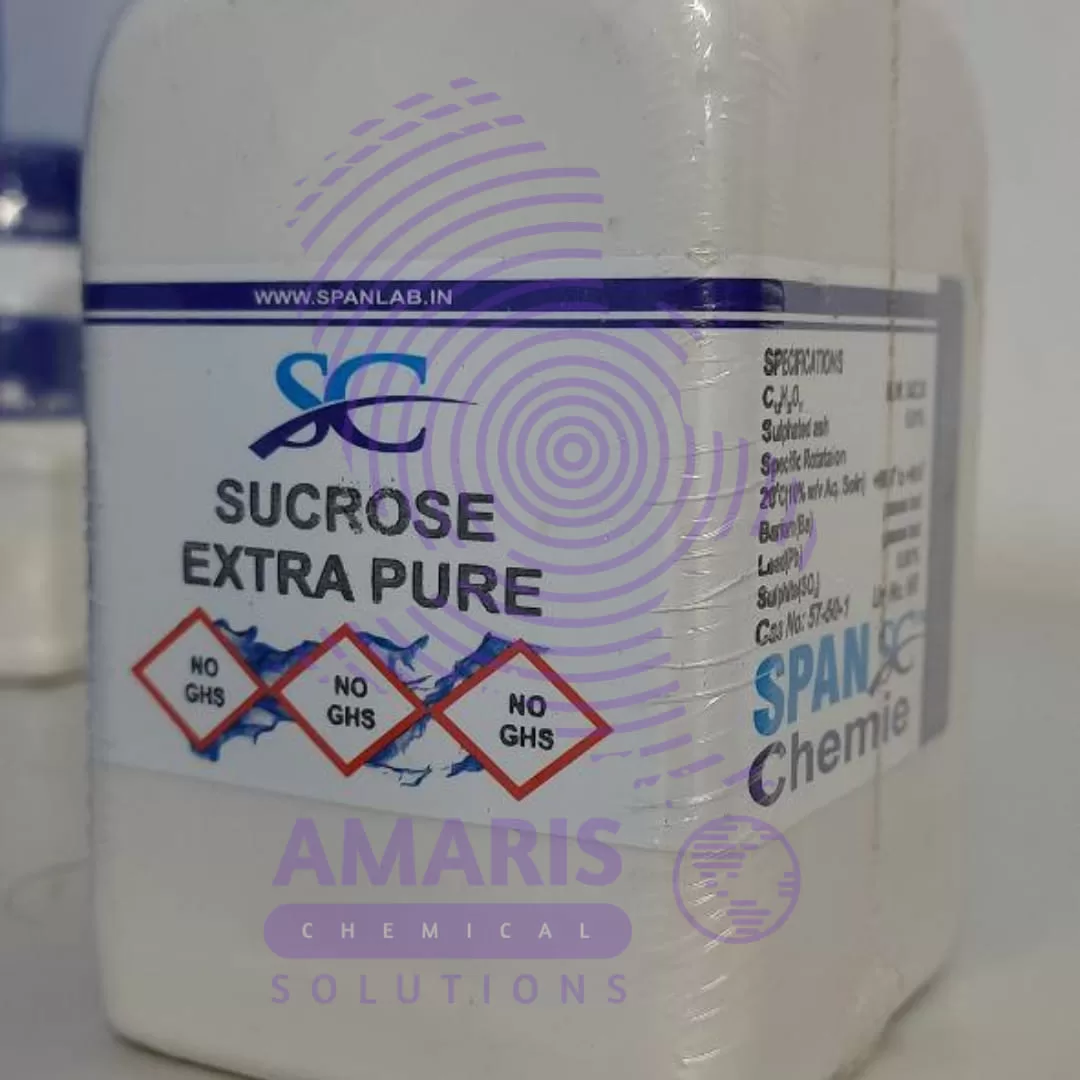Sodium Sulphate anhydrous 25kg
Sodium sulfate (chemical formula: Na₂SO₄) is an inorganic compound widely used in various industries. Here’s a detailed overview of sodium sulfate:
Properties
- Molecular Formula: Na₂SO₄
- Molar Mass: 142.04 g/mol
- Appearance: White crystalline solid
- Solubility: Highly soluble in water
- Density: 2.68 g/cm³ (anhydrous), 1.464 g/cm³ (decahydrate)
- Melting Point: 884 °C (anhydrous)
- Boiling Point: Decomposes before boiling (anhydrous)
Types
- Anhydrous Sodium Sulfate: Often referred to as the mineral thenardite.
- Decahydrate Sodium Sulfate: Known as Glauber's salt (Na₂SO₄·10H₂O).
Sodium Sulphate Anhydrous 500g
Sodium sulfate anhydrous, also known as anhydrous sodium sulfate or disodium sulfate, is a chemical compound with the formula Na2SO4. It is a white, crystalline powder that is soluble in water.
Here are some key properties of sodium sulfate anhydrous:
- Chemical formula: Na2SO4
- Appearance: White, crystalline powder
- Odor: Odorless
- Solubility: Soluble in water, insoluble in most organic solvents
- Melting point: 884 °C (1623 °F)
- Boiling point: 1400 °C (2552 °F)
- Hygroscopic: Yes (absorbs moisture from the air)
Sodium Thiosulphate 25kg
Sodium thiosulfate (Na2S2O3) is an inorganic compound that is commonly used as a photographic fixer, as well as in medical and industrial applications. It is a white crystalline powder that is soluble in water and has a mild odor. In photography, sodium thiosulfate is used to remove unexposed silver halide from photographic prints and negatives, making the image permanent. In medicine, it is used as an antidote for cyanide poisoning, and in industrial applications, it is used as a reducing agent, a dechlorinating agent, and in water treatment processes.
Sodium Thiosulphate Pentahydrate
Analytical Reagents, Disinfectants and Biocides, Excipients, Leaching Agents, Wastewater Treatment Chemicals
Sodium thiosulfate (Na2S2O3) is an inorganic compound that is commonly used as a photographic fixer, as well as in medical and industrial applications. It is a white crystalline powder that is soluble in water and has a mild odor. In photography, sodium thiosulfate is used to remove unexposed silver halide from photographic prints and negatives, making the image permanent. In medicine, it is used as an antidote for cyanide poisoning, and in industrial applications, it is used as a reducing agent, a dechlorinating agent, and in water treatment processes.
Soft iron rod
A soft iron rod is a cylindrical piece of iron characterized by its low carbon content, which results in a malleable and ductile material. This composition gives it excellent magnetic properties, allowing it to be easily magnetized and demagnetized. Soft iron rods typically have a smooth, polished surface and can vary in length and diameter depending on their intended use
Spatula plastic
A plastic spatula is a lightweight, durable tool typically used in laboratory and culinary settings. It features a flat, broad blade with a flexible edge that allows for precise scraping, mixing, and transferring of materials. Made from various types of plastic, such as polypropylene or polyethylene, these spatulas are resistant to many chemicals and solvents, making them ideal for a range of applications, including sample preparation, weighing, and spreading. Their non-reactive nature ensures minimal contamination, while their easy-to-clean design promotes laboratory safety and hygiene. Available in various sizes and shapes, plastic spatulas are essential for accurate and efficient handling of powders, liquids, and pastes in both scientific and cooking environments.
Splints wooden
Succinic Acid 500gm
Succinic acid, also known as butanedioic acid, is a dicarboxylic acid with the molecular formula C4H6O4. It is a white, odorless solid that is soluble in water. Succinic acid occurs naturally in some fruits and vegetables and is also produced synthetically for various industrial applications. It is used as a precursor in the synthesis of various chemicals, pharmaceuticals, and polymers. In laboratories, it serves as a reagent in chemical reactions and as a component in buffer solutions due to its ability to adjust pH.
Sucrose 500g
Analytical Reagents, Biochemicals Reagents, Excipients, Flavor Enhancers, Plant Growth Regulators, Sweeteners
Sucrose is a type of sugar commonly found in many plants, including sugarcane and sugar beets. It's a disaccharide, meaning it's composed of two simpler sugars, glucose and fructose, linked together. Sucrose is often used as a sweetener in food and drinks, and it's what we typically refer to as "table sugar." When we consume sucrose, enzymes in our digestive system break it down into glucose and fructose, which our bodies can then use for energy.
Sudan 3 powder Red 25gm
Sudan 3 is a synthetic red dye that typically comes in powder form. It's known for its deep red color and is commonly used in industrial applications, such as coloring oils, waxes, and polishes. It's important to handle Sudan 3 powder with care due to its staining properties and potential health risks if not properly managed.










